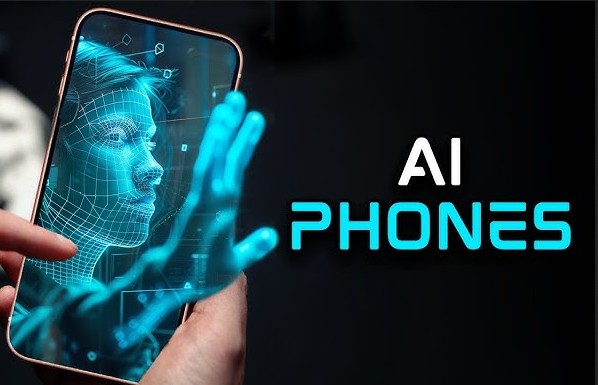Smartphone buying patterns are changing, and we are seeing significant shifts due to users holding onto their devices longer. There is also a definite digital divide between those who want a smartphone and those who embrace AI phones.
Stocklytics.com has analysed the last ten years of IDC’s Quarterly Worldwide Mobile Phone Tracker and Statcounter. It found that Samsung shipped a staggering 3.1 billion phones in the 2014-2024 period but has seen a steady decline. It shipped 36 million fewer units per quarter (3 months) than it did ten years ago and 28 million fewer than five years ago.

Why are Smartphone buying patterns changing?
To put this in perspective, the Apple iPhone, introduced in 2007, demonstrated that a smartphone was superior to a dumb phone. Why? Mainly due to the presence of something called apps. The primary purpose was to make and receive calls. Apps did more, including using email and calendar, and now there are over 2 million apps in the Apple Store.
Apple has weathered the downward trend slightly better, shipping 730 million fewer phones than Samsung during those 10 years. This is due to its strong brand loyalty, closed ecosystem, and longer upgrade cycles.
Enter AI versus no-AI
Until the 2023 Google Pixel 8, there was no AI on phones. Now, Google Gemini and its AI cloud are part of higher-end Android smartphones. But this is at a cost. They require
- More RAM (at least 12GB, preferably 16GB)
- Faster processors (such as Google Tensor G3/G4 or Snapdragon 8 Gen 3/4)
- A numerical processor unit (NPU)
- Fast mobile data to process much of the AI in the cloud.
Samsung bet the farm on premium AI models that generate the highest ARPU (Average Revenue Per Unit). Its volume A-series had lower margins, and while some were good value, other brands offered more.
The bottom line is that these phones cost $1,500-$3,000. Only those who are committed to the Samsung Galaxy S series or those who need AI are buying.
The real action was elsewhere
The rush to premium and AI allowed brands like OPPO to introduce their lower-cost phones with exceptional build quality and longer warranties (at the time). These ultimately won the hearts of the general public. Later, Motorola (now owned by Lenovo) substantially improved its G-series (which were already pretty good). It also introduced the innovative yet cost-effective mid-range Edge series. The $999 Motorola Edge 50 Pro – an excellent upper-mid-range smartphone won CyberShack’s 2024 phone of the year being the only one to pass all 15 selection criteria. Samsung’s S24 Ultra missed on several counts.
Sure, Samsung had its A-series, a safe buy, but OPPO and Motorola offered so much more for less.
Then, you had Alcatel (now gone), Nokia (now gone), and a few niche players like Nothing and ASUS. It is challenging for niche players to achieve the volume necessary to cover Australian certification costs. It is even harder to secure retail space to gain market share.
Hold the phone – longer
Going back just two years, one year was the average warranty length (for Samsung and Apple). Operating system upgrades and security patch updates were relatively brief. Our 2022 article, “What are the official Android OS and Security update policies?” marked the beginning of new policies that saw OPPO and Motorola offer two-year warranties on mid-range and premium phones.
Google’s and Samsung’s 2+7+7 warranty, OS upgrade, and security patch policy have extended smartphone life to 41 months (depending on which statistics you use).
Telcos are now offering 36-month contracts, but a staggering number of owners choose to keep the phone or pass it on to family.
Apple extended support (iOS 18 runs on the 2018 iPhone 10 XS Max, which is also 7 years old). This is driving a thriving second-hand and refurbished market. However, Apple generates little revenue from this market except from apps.
Depending on the model, OPPO and Motorola offer between 2 and 5 years, which is far more realistic.
While CyberShack applauds the increased support time, we know that in the fine print is a disclaimer.
New upgrades are subject to the hardware’s capability to run them. Few will be able to reach 7 years!
For example, 12GB (which Google has already stated should be a minimum of 16GB for AI) will be followed by phones with 24GB later in 2025, led by OPPO and Motorola. Xiaomi (including POCO and Redmi) is a non-starter for now, following its 2024 experiment with JB Hi-Fi.
CyberShack’s view: Smartphone buying patterns show we are smartphoned out
FACT: Smartphone buying patterns are changing because few can afford a premium high-speced AI-enabled smartphone.
Sure, AI can do some ‘cool stuff’, but not at the expense of hardware prices or subscriptions.
Is AI a genuine sales driver or merely an interesting tool? Telsyte found that only 20% of potential buyers show any interest in exploring what AI can do. A staggering 80% don’t want or need it. This reflects two things.
First, AI has not been explained very well to the general population. There are no killer must-have apps or compelling reasons to use it yet.
Secondly, basic AI will be available on almost every phone. Chip makers now include a neural processing unit (NPU) as part of every mid-range or higher System-on-a-Chip, as there is little to no additional cost of incorporating it. You can download Google Gemini (Nano) to any recent mid-range smartphone. Android 15 (soon 16) comes with basic AI features built in. Additionally, any heavy AI processing is done in the cloud, as smartphones lack on-device NPU power.
Companies like OPPO and Motorola realise this and have ‘democratised’ AI by incorporating lower-level AI into phones. This helps users take better photos, extend battery life, and enable on-device translation, among other features.
Companies like Google and Microsoft are developing apps (new versions of Gmail and Outlook) that do more for users without requiring a high-end smartphone or a monthly subscription.
The bottom line is that the digital divide will widen, offering great-quality smartphones at prices we can all afford and AI phones for the select few.
Our best advice to consumers is to opt for mid-range options., The next few years will see the AI wars intensify and some obvious winners emerge. I predict that those companies aiming to democratise AI for all will be the clear winners.
What to Buy?
Our twice-yearly guide, Best Android phones, was published on 11/2024 (it will be updated in 2025 shortly as new models emerge). It covers the most readily available phones at major retailers and provides guidance on phone reception strengths.



Comments